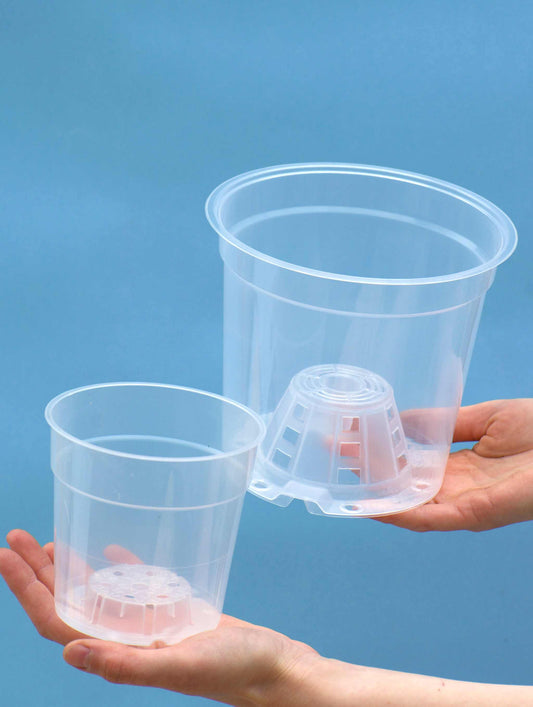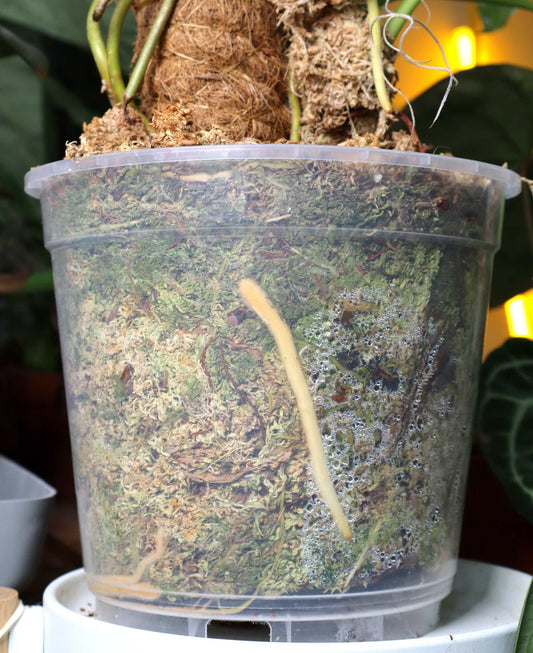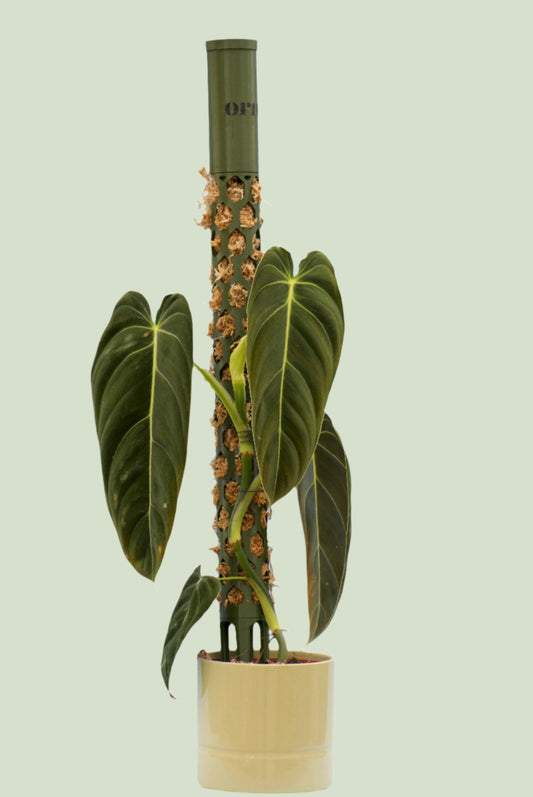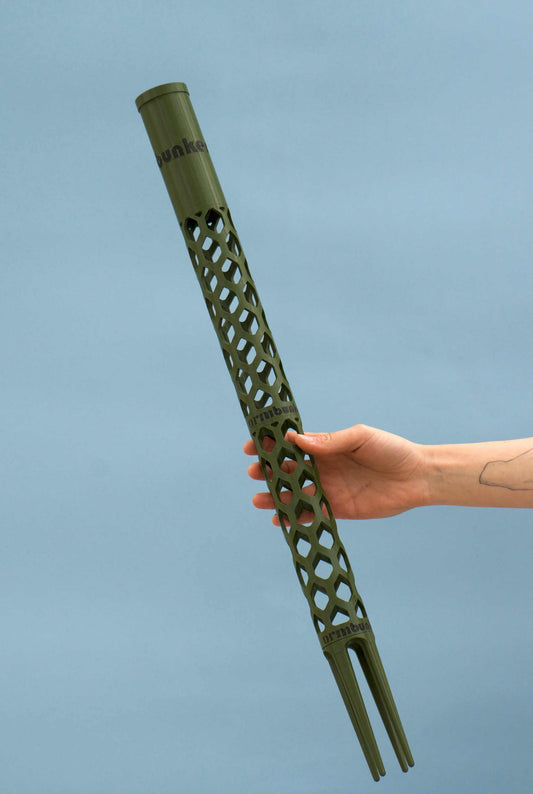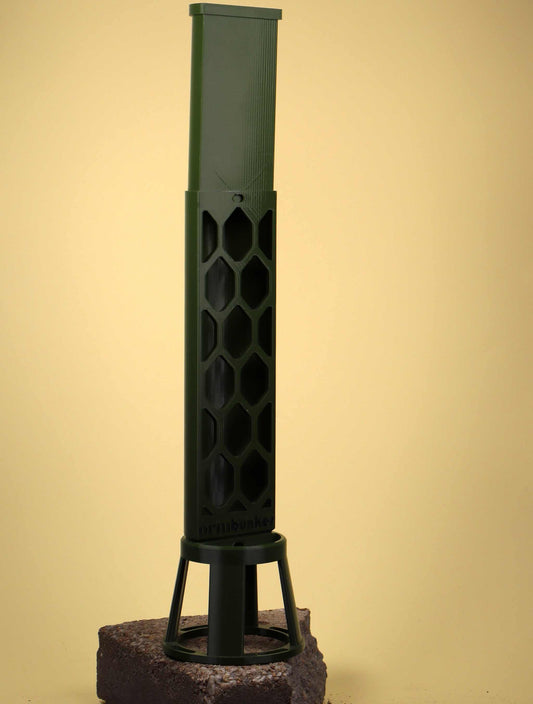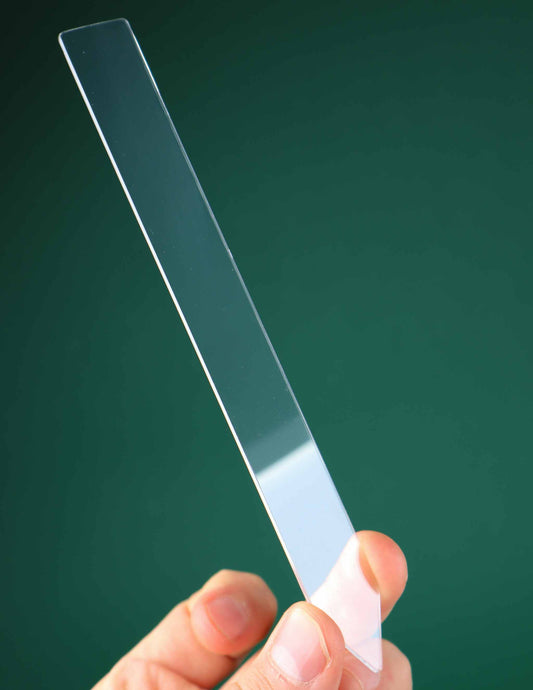Share
How to repot your houseplants: Step by step
Repotting your plants is a bit like changing to clean sheets, not something you do every day, but oh how nice it feels when it's done. It gives your indoor plants new energy, fresh soil and more room to grow.
But how do you know when it's time? What soil is best? And can you repot in a pot that's too big?
We go through everything you need to know about replanting houseplants
Why should plants be replanted?
Repotting a plant is not just about aesthetics, it is an important part of the plant's well-being:
Roots need space. As plants grow, the root system becomes larger and needs more space to absorb water and nutrients.

New soil, new nutrients. Indoor plants are grown in potting soil that is nutrient-rich, but over time the nutrients are used up. New soil makes a big difference.
So if your monstera is starting to look tired, or your orchid stops blooming, maybe it's time to repot.
How to repot a plant, step by step
1. Prepare. Lay out newspaper or stand by the sink. It will get a little messy.
2. Choose a pot. A large plastic pot or indoor pot with drainage holes. Avoid pots without holes.
3. Add soil to the bottom. About 2–3 cm of planting soil is enough.
4. Remove the plant. Hold the base and gently wiggle until it comes loose.
5. Loosen the roots. Shake off some soil and break up any clumps with your fingers.
6. Plant. Place the plant in the new pot. Fill in the soil around it.
7. Water thoroughly. Once, immediately after transplanting. Then let it rest.
How do you know it's time to replant?
Signs that it's time:
Roots are sticking out of the bottom or top of the pot.
The soil dries out quickly after watering.
The plant has remained dormant despite good light and water.
The soil feels compact or smells musty.
A simple test: Carefully remove the plant from the pot. Do you see the roots spinning around in a tight clump along the inside? Then it's time to change to a larger indoor pot, but not too big, more on that in a moment.

Does it matter which month you repot houseplants?
The best time is actually spring, from March to May, when the plant naturally enters a growth phase. That's when it has the best chance of recovering quickly. But if the plant is cramped in the pot or is feeling unwell, you can of course repot it later in the year.
What you risk is that the plant is exposed to more stress.
How do you replant new plants?
We usually have to replant plants in a similar substrate to the one they are already in.
For example, if you go from regular soil to growing hydroponically, i.e. in water, you risk the plant becoming very stressed. This sometimes leads to the roots and even the entire plant dying.
Another trick when it comes to repotting newly purchased plants is to let them get used to their new home for a while first. Hastily replacing the soil on a new plant can cause unnecessary stress and not be of much benefit at all.
What kind of pot is best?
It is a common mistake to plant in a pot that is too big. If you repot in a pot that is too big, the soil can hold too much moisture, which increases the risk of root rot. Choose a pot that is about 2–4 cm wider in diameter than the old one, just right is best.
Then comes the question of what material the pot should be made of. We strongly recommend using plastic pots as inner pots for almost all plants. Terracotta pots release a lot of moisture through the clay itself. This sometimes leads to the soil in the pot drying out quickly along the edge while the middle remains wet.

If you want to plant in a clay pot, it is best to use glazed clay pots because these do not let moisture through.
Should you remove all old soil when replanting?
No, it is enough to gently loosen the soil from the roots. Remove what is easy to get rid of, but avoid stressing the plant by washing away all the soil. A little old soil left behind will do nothing.
Which soil is best for indoor plants?
Always use peat-free potting soil for indoor plants, both for the sake of the plant and for the environment. Regular garden soil is often too compact and can harbor pests.
Different plants need different types of soil. However, the majority of indoor houseplants do very well with a mixture of coco peat and perlite. Perlite helps to make the soil lighter and more airy, which reduces the risk of root rot.
Some more sensitive plants such as orchids or aroids have aerial roots. These plants need a very airy soil with larger pieces of bark and a minimal amount of 'soil'. Some examples of plants that like to stand in this type of soil are: Monstera, Alocasia, Philodendron and most orchids.

When should you water after transplanting?
Water immediately after replanting – but then you should wait a bit. The roots can be sensitive, so let the soil dry out slightly before the next watering. Also avoid fertilizer for the first 2–3 weeks.
Do houseplants get stressed when moved?
Yes, that's normal. The leaves may droop a little or the plant may be dormant for a few weeks. That's completely normal. Give it some peace and quiet, adequate light and water – and it will recover soon.
Don't you want the plant to grow bigger?
Then you can actually cut the roots down a bit and put the plant back in the same pot – but don't forget to prune above ground too. Fewer roots = less leaf mass that can be carried.
Tips for different plants:
Repotting monstera: They like cramped pots, but when the roots push out, choose a sturdy, large indoor pot.
Repotting orchids: Use an airy orchid pot with lots of holes and bark-based soil. Repot when the roots turn gray or the pot is full.
Small plants: Repot them less often, often it is enough to change the soil without increasing the pot size more than a few cm.
Unusual plants: Always check the plant's needs, some species absolutely do not want too much space around the roots. This is especially true for orchids and other epiphytes (monstera, philodendron & co).
Grow indoors with the right conditions
When you buy green plants online, it's wise to also order good soil & a suitable pot . That way, you're ready to create a jungle at home, with healthy, transplanted plants that thrive.
Repotting plants is not something you need to do often, but when you do, you give your indoor plants new life. Use peat-free soil, appropriately sized pots, and be patient with the recovery. In our webshop you will find both plants online , soil and accessories to succeed in growing in pots, both large and small.
Good luck with the transplanting, your plants will thank you!


